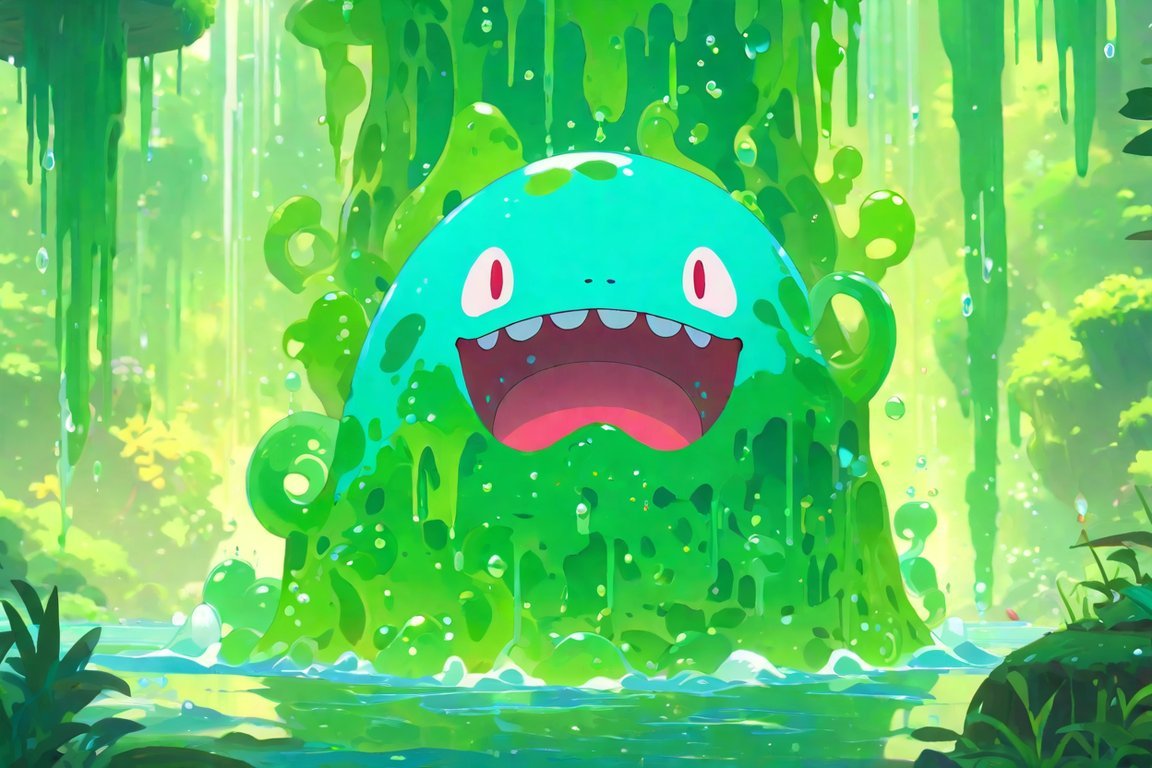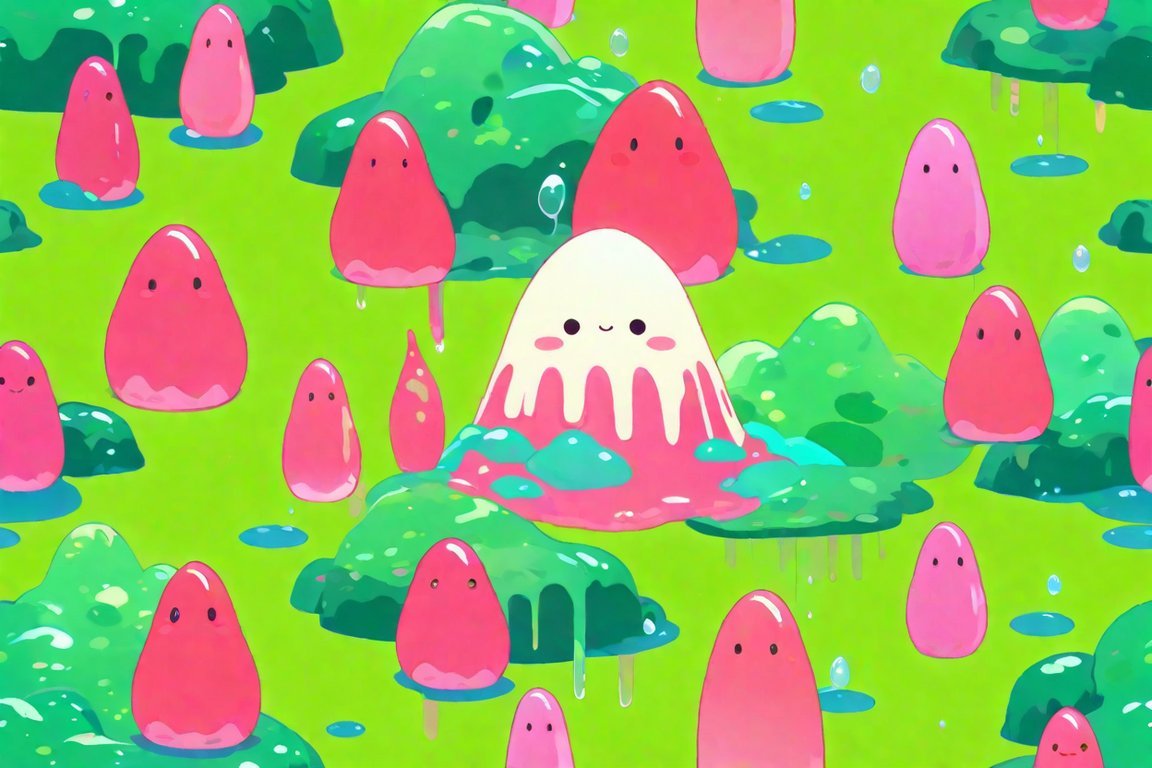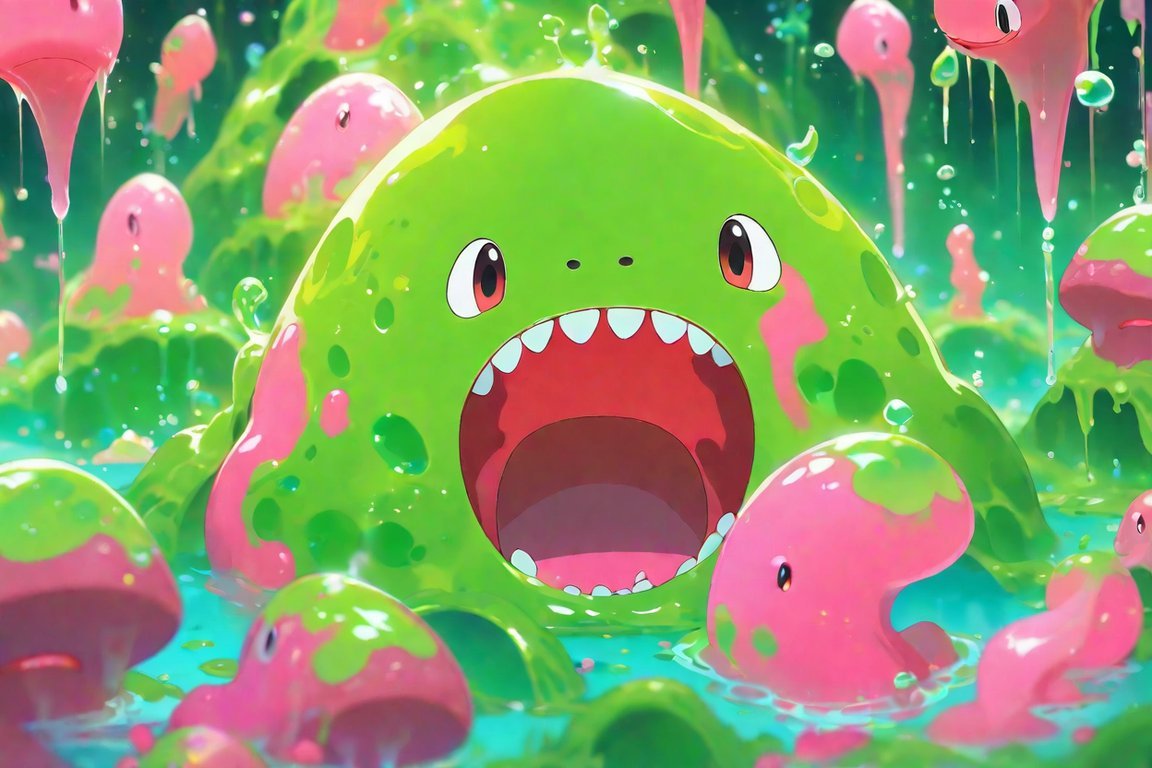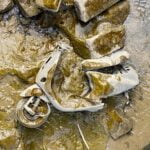Get ready to dive into the captivating world of slime as we explore the fascinating facts of slime: its ingredients, properties, and its role in sensory development. Slime has become a beloved sensory play material, captivating the imaginations of children and adults alike. In this article, we will unravel the curious science behind slime, revealing the secrets of its gooey texture, the key ingredients that bring it to life, and the benefits it offers in enhancing sensory development and educational activities. So, let’s embark on this slime-filled adventure and discover the mesmerizing facts that make slime such a unique and engaging substance!

Key Takeaways:
- Slime has a long history, dating back thousands of years and being used for various purposes in civilizations like the Greeks and Egyptians.
- The main ingredient in slime is polyvinyl acetate, found in white glue, which reacts with borax to create the slimy texture.
- There are different types of slime, including fluffy slime, glitter slime, and magnetic slime, each with its own unique characteristics.
- Playing with slime offers benefits such as stress relief and sensory stimulation.
- Slime has therapeutic effects, promoting mindfulness, enhancing creativity, boosting mood, and improving mental health.
Facts About Slime
Slime has captivated people of all ages for centuries. Its gooey and stretchy texture, combined with its vibrant colors and endless creative possibilities, make it a favorite sensory play material. In this article, we will explore some fascinating facts about slime, including its ingredients, properties, and its role in sensory development.
A History Dating Back Thousands of Years
The history of slime traces back thousands of years to ancient civilizations like the Greeks and Egyptians. These civilizations used natural materials like tree sap, beeswax, and oil to create their own versions of slime. They used it for various purposes, such as creating sealants and adhesives for pottery and construction, as well as for religious rituals.
A Chemical Reaction of Glue and Borax
Today, slime is created through a simple chemical reaction between glue and borax. The main ingredient in slime is polyvinyl acetate, a polymer found in white glue. When mixed with borax dissolved in water, polyvinyl acetate undergoes a process called cross-linking, which results in the formation of the stretchy, gooey substance we know as slime. Other ingredients like coloring agents, glitter, or even magnetic particles can be added to create different types of slime, such as fluffy slime, glitter slime, and magnetic slime.
Properties That Mesmerize
Slime possesses unique properties that make it fascinating to play with. Its non-Newtonian behavior allows it to act as both a liquid and a solid, depending on the force applied to it. When you try to squeeze slime, it behaves like a solid, but when you let it flow through your fingers, it acts like a liquid. This property makes slime an excellent tool for sensory play, as it provides a captivating tactile experience.
Engaging the Senses
Playing with slime offers a range of benefits beyond just fun. Its squishy texture provides stress relief and sensory stimulation, making it ideal for relaxation and mindfulness. Engaging with slime can enhance creativity and boost mood, allowing individuals to explore their imagination. Many find playing with slime a therapeutic experience that promotes mental well-being and helps reduce anxiety and stress.
Sensory Development and Learning
Slime can also be a valuable tool for educational activities, especially for young children. The sensory experience of manipulating slime can enhance tactile and fine motor skills, as well as hand-eye coordination. Through playing with slime, children learn about cause and effect, as they observe how different movements and pressures affect its behavior. Slime can also be used to introduce scientific concepts like chemical reactions and states of matter in a hands-on and playful way.
Conclusion
From its ancient origins to its therapeutic and educational applications today, slime continues to captivate and engage people of all ages. Its unique properties, diverse types, and tactile experience make it a beloved sensory play material. Whether it’s for stress relief, creative expression, or learning, slime offers numerous benefits. So go ahead, grab some slime, and let your creativity flow!
Here are some captivating and active internal links for the provided keywords and URLs in Markdown format:
- Facts on Architecture – Discover fascinating information about architecture that will amaze you!
- Facts about the Coastal Plains – Uncover intriguing details about the coastal plains that you never knew before!
- Facts about Macarons – Delve into the world of macarons and its interesting facts that will tickle your taste buds!
- Facts about Karnak Temple – Explore the historical and architectural wonders of Karnak Temple through these incredible facts!
- Facts about Churros – Get ready to tantalize your taste buds by discovering some delightful facts about churros!
- Facts about Boba – Dive into the fascinating world of boba and uncover interesting facts that will leave you craving for more!
- Facts about Coastal Plains – Get to know the mesmerizing features and intriguing facts about the coastal plains like never before!
- Interesting Facts about the Maya Civilization – Embark on a journey through time and learn captivating facts about the ancient Maya civilization!
- Interesting Facts about Chad – Explore the hidden treasures of Chad with these incredible and mind-boggling facts!
- Dessert Facts – Indulge your sweet tooth with some mouthwatering and surprising dessert facts that will satisfy your cravings!
Feel free to click on any of the links above to dive deeper into these captivating topics!
The Science Behind Slime
Whether you’ve made it at home or encountered it in a toy store, slime has undoubtedly caught your attention. Its gooey and stretchy texture, vibrant colors, and endless creative possibilities make it a fascinating sensory material for both kids and adults. But have you ever wondered about the science behind slime? In this article, we will explore the intriguing world of slime, delving into its ingredients, properties, and even its role in sensory development.
Slime: More Than Just Goo
Did you know that slime is not just a man-made concoction but also exists in nature? In fact, slime molds, which are amoebas, can be found in various environments, particularly on rotting wood and decomposing matter [^1]. Slime molds come in over 900 unique species, showcasing the remarkable diversity in nature’s slime production.
But slime also has a place in our everyday lives. Yes, you heard it right! Slime, in its natural form, is known as mucus. You might be surprised to discover that you have some of this slimy substance in your nose right now. Mucus, commonly referred to as snot, plays a crucial role in protecting our bodies by trapping dirt and bacteria, preventing them from entering our respiratory system [^1].
Ingredients: The Secret Recipe
While nature produces slime in the form of mucus, the slime you create at home or find in stores is a bit different. So, what exactly goes into making this enticing substance? One common recipe involves a chemical reaction between glue and borax. The glue contains a polymer called polyvinyl acetate, which binds with borax molecules to form long chains. These chains intertwine, creating the unique stretchy and gooey consistency that we associate with slime [^1].
Properties of Slime: The Magic Unveiled
Slime possesses some fascinating properties that make it more than just a simple plaything. One of its unique features is its non-Newtonian behavior, which means that it can act as both a liquid and a solid depending on the force applied. When you handle slime slowly or let it sit still, it behaves like a liquid, flowing and stretching. But when you apply force by squeezing or poking it, it instantly becomes solid, offering resistance and even breaking apart under excessive pressure [^1].
Apart from being a tactile delight, slime also has therapeutic qualities. Many people find playing with slime to be a stress-relieving activity. The sensory stimulation it provides can help calm the mind and promote relaxation. Moreover, slime encourages creativity and imagination, allowing individuals to explore various textures, colors, and even add fun elements like glitter or magnetic properties [^1].
The Role of Slime in Sensory Development and Education
Slime isn’t just a toy; it also serves as a valuable tool for sensory development and education. Sensory play, which involves engaging the senses to explore, create, and learn, is an integral part of childhood development. Playing with slime offers a multisensory experience, stimulating touch and sight and providing an avenue for self-expression and experimentation.
Additionally, slime can be used to enhance fine motor skills, hand-eye coordination, and even introduce scientific concepts. Through kneading, stretching, and manipulating slime, children develop their hand muscles and improve dexterity. They also learn about cause and effect as they observe how different actions impact the slime’s texture and behavior. Furthermore, experimenting with slime can spark curiosity and instill an early interest in chemistry and materials science [^1].
Key Takeaways:
- Slime molds, known as amoebas, exist in nature, growing on decomposing matter.
- Slime in our bodies is called mucus or snot, which acts as a protective barrier.
- Homemade or store-bought slime is made through a chemical reaction between glue and borax.
- Slime exhibits non-Newtonian behavior, behaving as both a liquid and a solid.
- Playing with slime can provide stress relief, sensory stimulation, and enhance creativity.
- Slime can be used as a tool for sensory development and introducing scientific concepts.
Citations:
[^1]: Nine Serious Fun Slime Facts – Kansas Discovery Center
Different Types of Slime: Exploring the Fascinating World of Slime
Slime has become a fascinating sensory play material enjoyed by both children and adults alike. It comes in various types and forms, each offering a unique sensory experience. Let’s dive into the world of slime and explore the different types that exist.
The Many Variations of Slime
Slime comes in a wide array of variations, each offering its own unique characteristics and properties. Here are some of the most popular types of slime:
- Basic Slime: Basic slime is the most popular type and serves as the foundation for many other slime variations. It is typically made using white glue and borax.
- Clear Slime: Clear slime, as the name suggests, is transparent and allows you to see through it. It is made using clear glue and borax.
- Deco Slime: Deco slime is known for its visual appeal. It is usually clear and contains interesting elements inside, such as deco glitter, beads, or sequins.
- Floam: Floam is a unique type of slime that is filled with foam beads. This gives it a bumpy and crunchy texture, making it a delight to squish and squeeze.
- Fishbowl Slime: Fishbowl slime takes its inspiration from the underwater world. It is filled with tiny glass fishbowl beads, resembling fish swimming in a bowl.
- Glitter Slime: Glitter slime adds sparkle and shine to the classic basic slime recipe. It is made by mixing glitter into the slime mixture, creating a magical and glamorous effect.
- Rainbow Slime: Rainbow slime is a colorful and vibrant type of slime. It is created by incorporating different colors into the slime mixture, resulting in a beautiful rainbow effect.
- Glow-in-the-Dark Slime: Glow-in-the-dark slime is an exciting variety that emits a mesmerizing glow in low light conditions. It can be created by adding glow-in-the-dark pigment or using specialized glow-in-the-dark glue.
- Fluffy Slime: Fluffy slime has a unique soft and airy texture, resembling a squishy marshmallow. It is created by adding shaving foam or other lightening agents to the slime mixture.
- Foam Slime: Foam slime contains foam beads, just like floam. However, foam slime typically has a higher concentration of foam beads, resulting in a more textured and foamy consistency.
- Magnetic Slime: Magnetic slime is a truly fascinating type of slime that reacts to magnets. It contains iron oxide powder, allowing it to be attracted to magnets and creating endless possibilities for exploration.
- Edible Slime: Edible slime is a safe and fun option that can be consumed. It is made using food-grade ingredients, ensuring it’s safe to eat for a playful sensory experience.
- Cloud Slime: Cloud slime is light, airy, and fluffy, similar to a cloud. It has a unique texture that is soft and moldable, providing a delightful tactile experience.
- Metallic Slime: Metallic slime features a shiny, metallic finish. It is achieved by mixing metallic powders or glitters into the slime mixture, resulting in a stunning visual effect.
- Crunchy Slime: Crunchy slime is a textured slime variety that contains small add-ins like foam beads or other crunchy elements. It provides an additional sensory experience with its satisfying crunch.
- Jellyfish Slime: Jellyfish slime gets its name from its unique appearance, resembling a jellyfish floating in the sea. It is made by incorporating jellyfish-shaped materials or by using creative techniques to mimic its likeness.
- Color Changing Slime: Color changing slime adds an element of surprise and wonder. It changes color in response to temperature, providing an engaging sensory experience.
These different types of slime offer endless possibilities for fun, sensory exploration, and creative play. Whether you’re squishing, stretching, or manipulating it, slime never fails to captivate and engage.
Key Takeaways:
– There are various types of slime, each with its own unique characteristics.
– Basic slime, clear slime, deco slime, floam, fishbowl slime, glitter slime, rainbow slime, glow-in-the-dark slime, fluffy slime, foam slime, magnetic slime, edible slime, cloud slime, metallic slime, crunchy slime, jellyfish slime, and color changing slime are some of the popular variations.
– Different types of slime offer diverse textures, visual effects, and sensory experiences.
– Slime can be a versatile material for play, sensory development, and educational activities.
Sources:
1. Slime Amino – Types of Slime
2. Just Crafting Around – Types of Slime
The Benefits of Slime in Sensory Play and Education
Sensory play is an essential part of a child’s development, providing numerous benefits for cognitive, physical, and emotional growth. One form of sensory play that has gained popularity in recent years is playing with slime. The gooey, stretchy, and squishy nature of slime offers a unique sensory experience that captivates children’s attention and imagination. But what exactly makes slime so beneficial in the realm of sensory play and education? Let’s dive into the fascinating facts about slime and explore its many benefits.
Benefits of Slime in Sensory Play
When children engage in sensory play with slime, they experience a range of benefits that contribute to their overall development. Here are some key advantages of incorporating slime into sensory play activities:
- Focus Enhancement: The act of adding ingredients, colors, and textures to slime helps children focus on the task at hand. This makes slime an excellent brain break during academic activities, allowing children to recharge their minds and enhance their concentration.
- Sensory Input: Kneading, pulling, and squishing slime provides tactile and proprioception input, which supports sensory development. This input helps children explore different textures and sensations, promoting their ability to process sensory information effectively.
- Creativity Boost: Sensory play, such as playing with slime, allows children to utilize all five senses, fostering creativity and learning through exploration. As they manipulate the slime and experiment with its properties, children can engage in imaginative play and develop their creative thinking skills.
- Fine Motor Skills Development: Playing with slime requires precise hand movements, such as pinching, squeezing, and stretching. These activities promote the development of fine motor skills and hand-eye coordination in children, helping them refine their dexterity and control.
- Language Development: Sensory play with slime provides opportunities for children to use descriptive and expressive language. As they explore the texture, colors, and characteristics of slime, they can expand their vocabulary and learn to articulate their observations and experiences.
- Promotes Mindfulness: The squishy and malleable nature of slime can have a calming effect on children, promoting mindfulness and allowing them to be present in the moment. Playing with slime can be a soothing and relaxing sensory experience that promotes a sense of tranquility and well-being.
- Beneficial for Sensory Processing Disorders: Slime can be especially beneficial for children with sensory processing disorders. The varied textures and sensory input offered by slime can help regulate sensory responses and promote self-calming techniques in these children.
Key Takeaways:
- Slime in sensory play enhances focus, sensory input, creativity, fine motor skills, language development, and mindfulness.
- Playing with slime supports the development of fine motor skills, coordination, and descriptive expressive language.
- Slime provides a calming and soothing sensory experience, promoting mindfulness and being in the present moment.
- Sensory play with slime is particularly beneficial for children with sensory processing disorders.
Sources:
– Mindful Child Aerial Yoga. The Many Benefits of Slime.
– Slime Creator 2020. Top 10 Benefits of Playing with Slime.

FAQ
Q1: How many species of slime mold are there in the world?
A1: According to the Kansas Discovery Center, there are over 900 species of slime mold in the world [^1].
Q2: What is the difference between mucus and slime?
A2: Slime in nature is actually called mucus, and it exists in your nose right now. The mucus, also known as snot, acts as a protective barrier by catching dirt and bacteria [^1].
Q3: What are the different types of slime?
A3: There are several types of slime, including basic slime, clear slime, deco slime, floam, fishbowl slime, glitter slime, rainbow slime, glow-in-the-dark slime, fluffy slime, foam slime, magnetic slime, edible slime, cloud slime, metallic slime, crunchy slime, jellyfish slime, and color-changing slime [^1][^2].
Q4: What are the benefits of playing with slime?
A4: Playing with slime offers various benefits, including stress relief, sensory stimulation, promotion of mindfulness, enhancement of creativity, mood-boosting, improvement of fine motor skills, language development, and coordination [^3][^4].
Q5: Can playing with slime benefit children with sensory processing disorders?
A5: Yes, playing with slime can benefit children with sensory processing disorders by providing sensory input and promoting sensory development [^4].
















